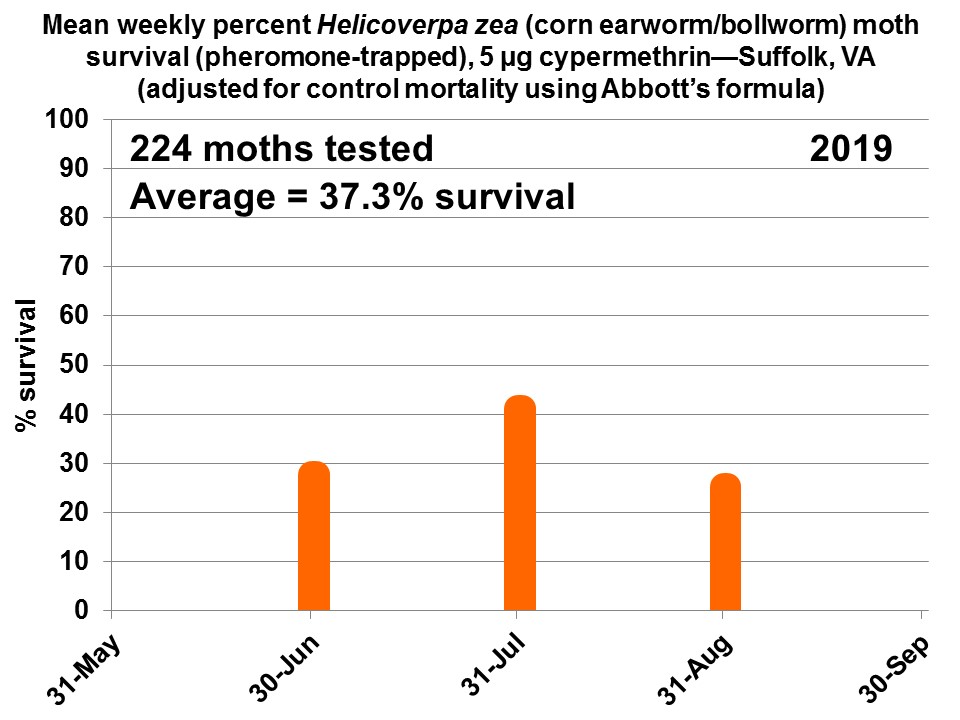Prior to this week, corn earworm/bollworm moth counts have been low in southeast Virginia black light traps. For this week (July 17-23), average nightly catches of moths were: Greensville = 7.4; Prince George-Templeton = 0.3; Prince George-Disputanta = 0.7; Southampton = 1.5; Suffolk = 7.4. Thanks to the Virginia Cooperative Extension Agents who are operating traps this season.
We have tested 47 corn earworm/bollworm moths since June 23, 2020 in our pyrethroid resistance monitoring program. Moths are captured in pheromone traps and are exposed to 5 micrograms of cypermethrin inside a glass vial for 24 hours, then rated as dead/down/alive. Untreated controls (in acetone-only treated vials) are also evaluated to correct for control mortality. The average for the past month is 43% moth survival. High survival rates indicate an increased chance of pyrethroid control issues and the need to consider alternative chemistries if a spray is needed.
In a non-Bt corn experiment planted on April 9 at our research farm in Suffolk, VA, we had large corn earworm larvae in the ears last week. Now they have exited the ears and are pupating in the soil. It takes about 10 days for the moths to emerge–this flight out of corn is the one that we are concerned with in crops such as soybean, cotton, peanuts, and vegetables–the moths want to lay eggs on a good food source for their larvae. Please check back with the Advisory for more pest updates and recommendations.


